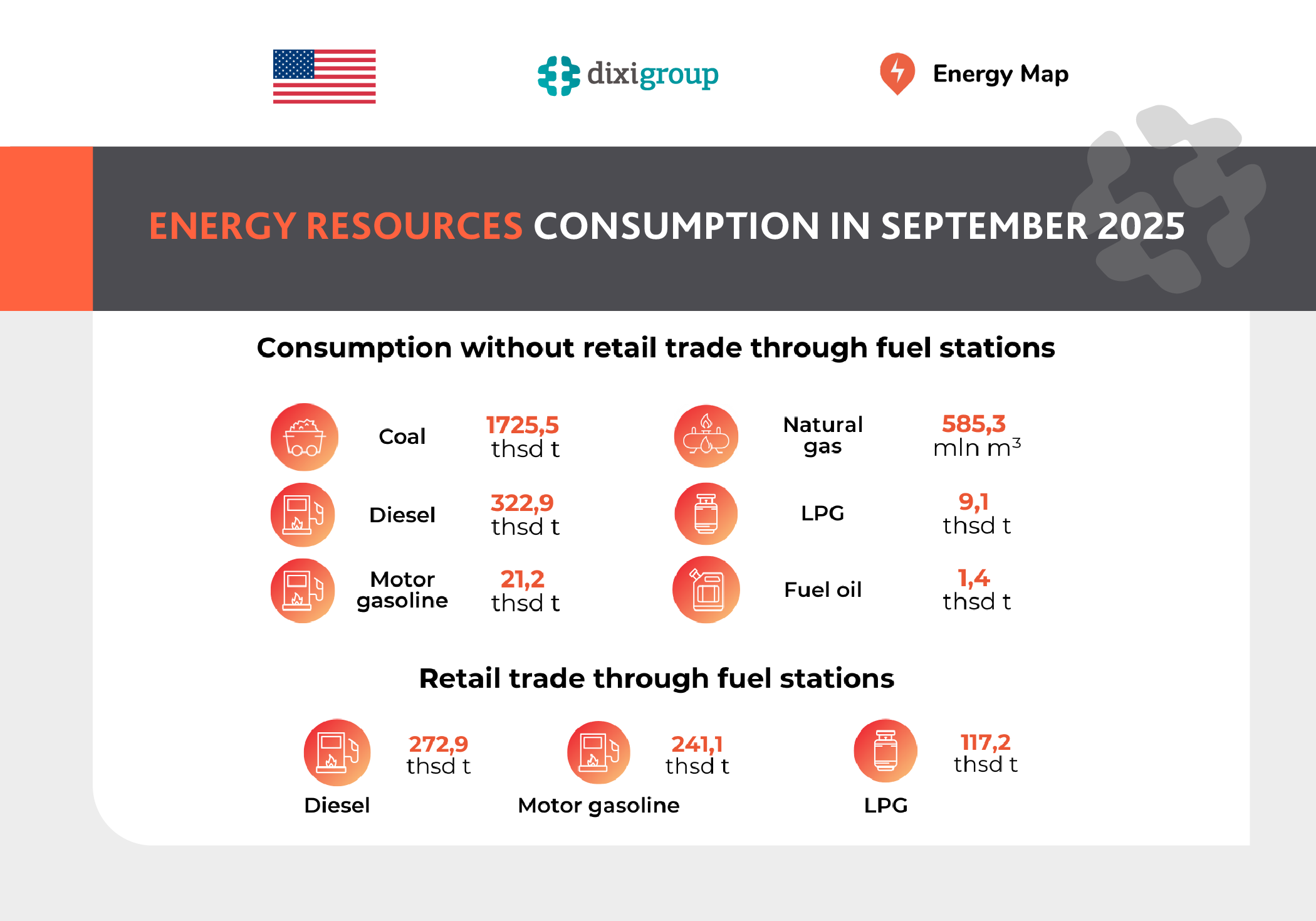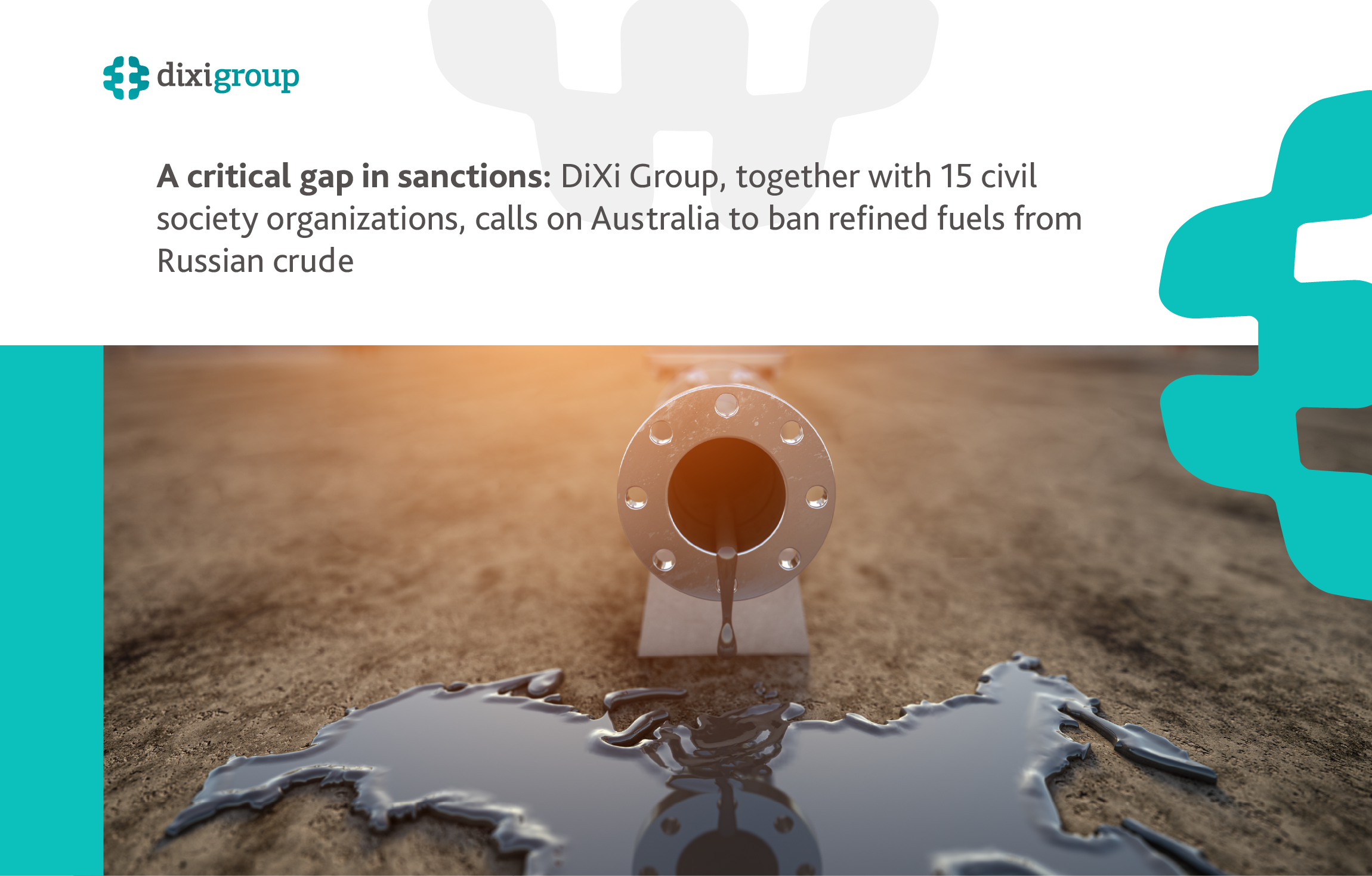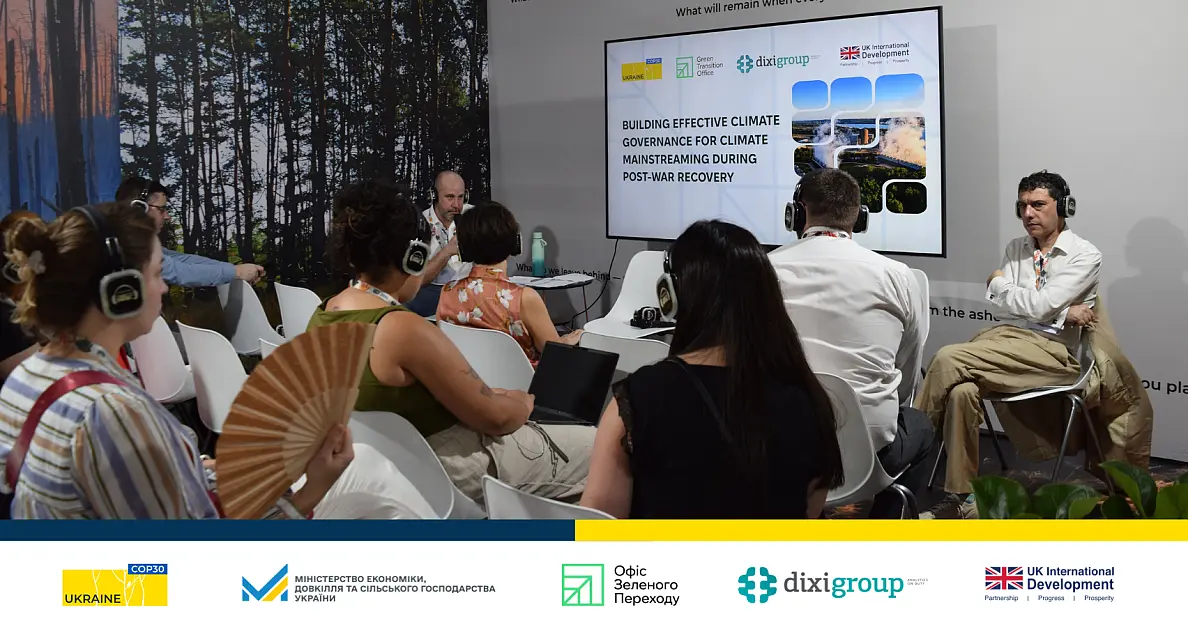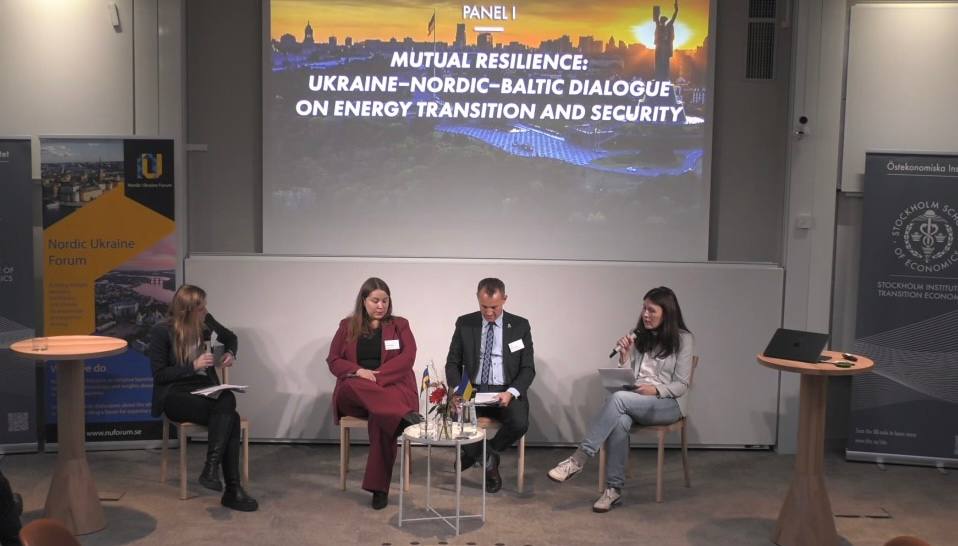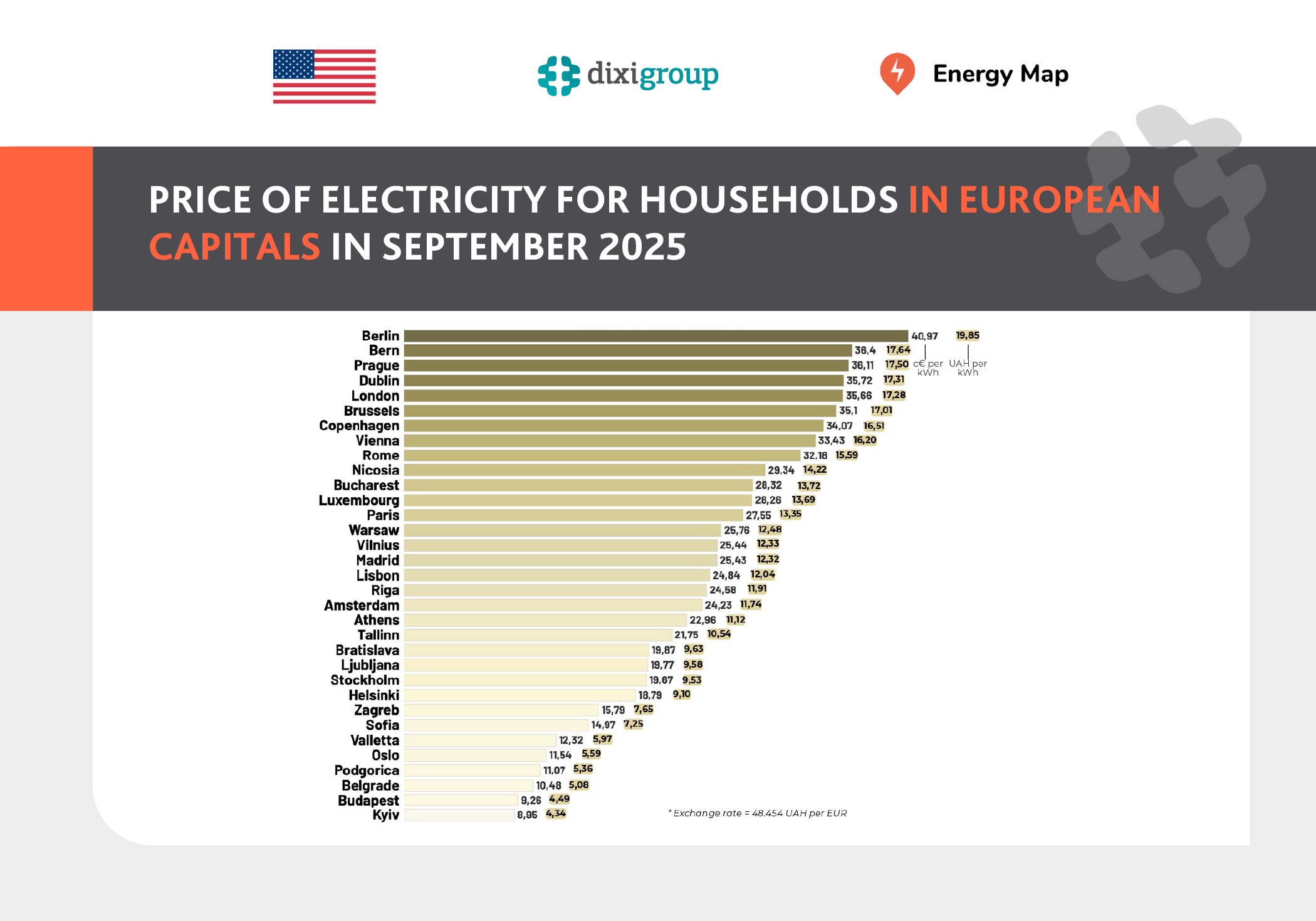According to Energy Map data referencing the Household Energy Price Index (HEPI), in September 2025, the indicative* price of natural gas for Kyiv households was 1.62 euro cents (c€) per kWh, making it the lowest among all European capitals. For comparison, the most expensive gas is in Stockholm, where the price reaches 34.39 c€/kWh – 21 times higher than in Kyiv.
Converted at the official exchange rate of the National Bank of Ukraine for September (1 EUR = 48.45 UAH), the price in Ukraine equals approximately 0.78 UAH/kWh. Using the conversion factor of 10.595 kWh per cubic meter, this corresponds to 8.32 UAH/m³.
The average household gas price across 27 European capitals in September 2025 was 10.19 c€/kWh (52.31 UAH/m³), meaning that the cost of gas in Kyiv is 6.3 times lower than the European average.
Where is gas the most and least expensive in Europe
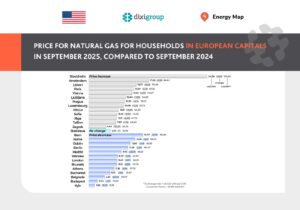
The highest gas price among European capitals is in Stockholm – 34.39 c€/kWh (176.55 UAH/m³). The high price is explained by the small size of the market: only about 77,000 households in Sweden use gas, of which 50,000 are in the capital.
The top five capitals with the highest gas prices also include:
- Amsterdam – 17.52 c€/kWh (89.94 UAH/m³);
- Bern – 15.77 c€/kWh (80.96 UAH/m³);
- Lisbon – 13.73 c€/kWh (70.49 UAH/m³);
- Rome – 13.36 c€/kWh (68.59 UAH/m³).
In September, Central and Eastern European countries had household gas prices below the European average.
After Kyiv, the lowest prices were recorded in:
- Budapest – 2.54 c€/kWh (13.04 UAH/m³);
- Belgrade – 4.61 c€/kWh (23.67 UAH/m³);
- Zagreb – 4.94 c€/kWh (25.36 UAH/m³).
Year-over-year price dynamics
Between September 2024 and September 2025, the gas indicative price for Kyiv households decreased by 2.6% in UAH terms – from 8.54 to 8.32 UAH/m³. In euro cents, the price fell by 8.0%, from 1.76 to 1.62 c€/kWh.
This decline may be linked to fluctuations in the exchange rate of the hryvnia against the euro used in HEPI’s calculations, since household gas tariffs in Ukraine have remained stable throughout the full-scale war.
As of mid-2025, about 98% of Ukrainian households are customers of GSC Naftogaz of Ukraine LLC, where the annual fixed tariff (7.96 UAH/m³, including VAT but excluding transportation costs) has remained unchanged since 2022. This tariff will remain in effect until at least April 30, 2026.
Among European capitals, Vilnius is the leader in terms of natural gas price growth. Over the past 12 months, the cost of gas for residents of the Lithuanian capital has increased by 15.6% to 8.61 c€/kWh (44.20 UAH/m³). In two other capitals, the tariff has increased by 10% or more: Sofia – 11.9% (8.25 c€/kWh or 42.35 UAH/m³) and Zagreb – 10% (4.94 c€/kWh or 25.36 UAH/m³).
In Bratislava, the gas price remained unchanged at 6.19 c€/kWh (31.78 UAH/m³).
The largest decrease was observed in Belgrade, where prices fell by 30.3% (to 4.61 c€/kWh or 23.67 UAH/m³). Significant declines were also recorded in Madrid (-23%, to 9.41 c€/kWh or 48.31 UAH/m³) and Bern (-18.2%, to 15.77 c€/kWh or 80.96 UAH/m³).
For nine other capitals, prices decreased by less than 7%: Brussels (-6.9%), Warsaw (-5.8%), Rome (-5.6%), Athens (-3.3%), Berlin (-2.5%), Bucharest (-1.6%), Budapest (-1.6%), Dublin (-1.4%), and London (-0.2%).
* Indicative price – a calculated value that reflects the typical gas supply offer available to household consumers in a country’s capital city as of the first day of the month. Within the HEPI project, it is determined based on current tariffs of major suppliers, average consumption levels, and applicable national taxes, fees, and government support measures.
The material is made possible by the support of the American people as part of the Energy Sector Transparency Project implemented by DIXI GROUP. The information contained in this material is the sole responsibility of DIXI GROUP and can under no circumstances be taken to reflect the position of the U.S. Government.

